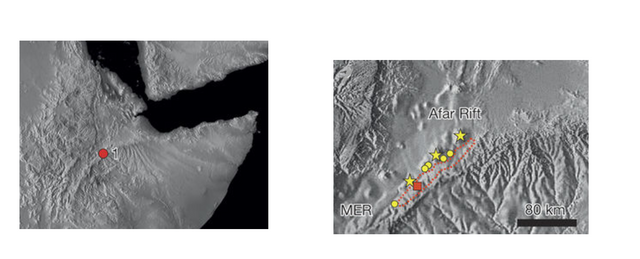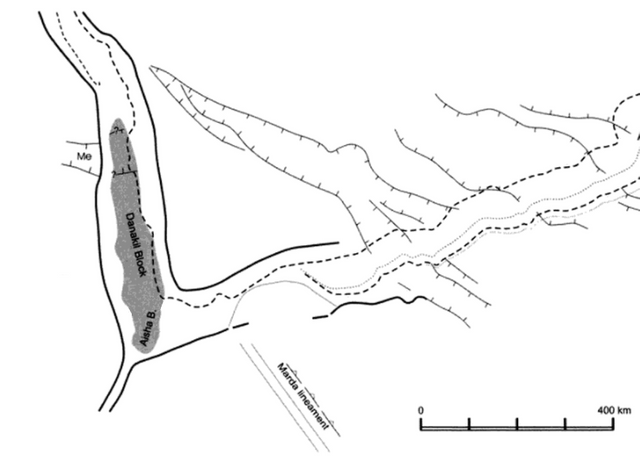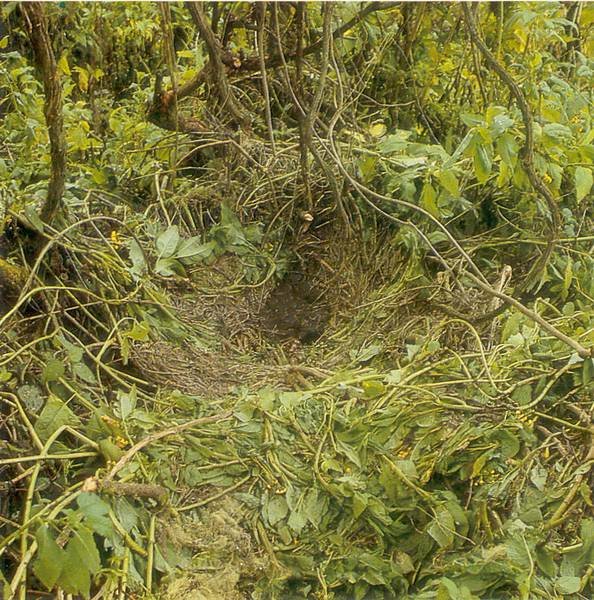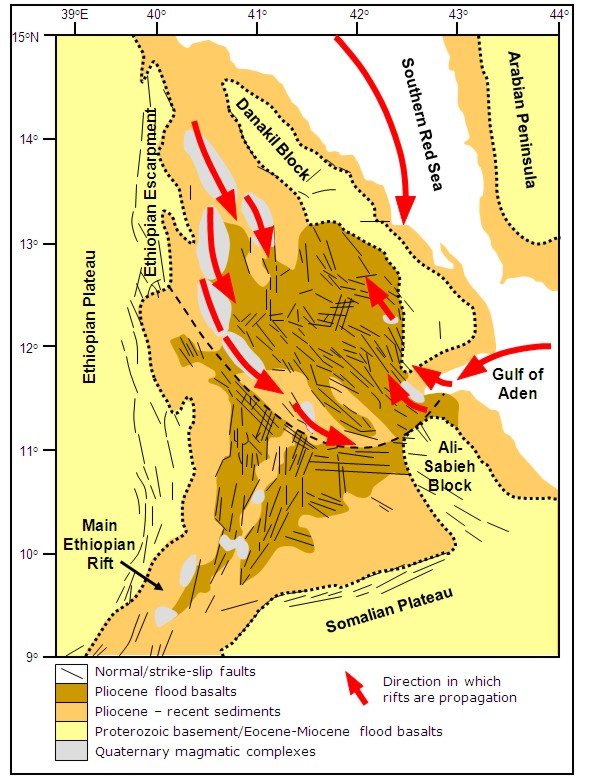The proto-gorilla Chororapithecus (10.5-10 Ma) as a result of mountainous areas along the Mid Ethiopian Rift
Australopithecus got pubic hair lice from ancestors of gorillas around 3.3 million years ago[1]. The geographical proximity of Australopithecines and proto-gorillas, could be the result of that gorillas evolved as a result of the mountain region in the Ethiopian Plateau forming, whereas Australopithecines evolved as a result of geographical isolation on Danakil.
The oldest ancestor of gorilla ever found is Chororapithecus abyssinicus[2] from the Chorora Formation just south of where the first proto-humans Ardipithecus are found. The Chorora region is marked by the red dot in the image below.

Within the hypothesis of a mountain-origin of Chororapithecus, the Chorora Formation would have fallen down from the mountains, through faulting of the mountain edge along the rift, and so the Chororapithecus did not live by the river but up in the mountain.
Why a fault-origin of Chorora? Just north of Chorora is where the Aysha block attached to Somalia, and so the region along the Mid Ethiopian Rift south of that block would have collapsed when the Danakil-Aysha block pulled away from Somalia.

The Ethiopian Plateau, an expansion tectonics perspective
As the rift formed, as a result of a continued increase in earth radius[3], the land around it was uplifted/crumbled, forming mountains with the Ethiopian Plateau. A few Proconsul-like apes found themselves at increasingly higher altitudes, possibly with less access to fruit, and around 10 million years ago[2] had adapted to eat leaves and stems like gorillas do today. [Notes]
Simultaneously, another lineage of descendants of Proconsul-like apes got separated on Danakil 7 million years ago just north of the Chororapithecus population.
Around 3–4 million years ago, the Pliocene flood basalts[Appendix A] created a land bridge from Danakil to Somalia, and the Australopithecines found their ecological niche disturbed, and migrated southward along the edge of the mountains. There, they came across abandoned leaf nests which descendants of Chororapithecus had begun to build to sleep in. Because the Australopithecines had an exploratory behaviour, they somehow got Pthirus gorillae[1, 4] from those nests, around 3.3 million years ago[1].

References
Pair of lice lost or parasites regained: the evolutionary history of anthropoid primate lice
A new species of great ape from the late Miocene epoch in Ethiopia
On the Origin of Continents and Oceans: A Paradigm Shift in Understanding
New geological and palaeontological age constraint for the gorilla–human lineage split
Notes
- The teeth of Chororapithecus appeared specialized for eating stems and leaves, and resembled those of modern gorillas, which suggests that Chororapithecus probably represents an ancestral branch of the gorilla lineage. [source]
Appendix A

you post very interesting content i love reading your post.
very interesting! following!
Interesting! I like it.